Phenyl isocyanide
Isocyanobenzene
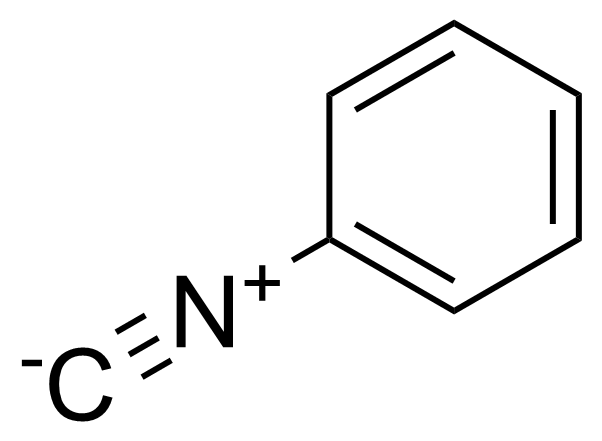
Pour plus d’informations ou si vous avez des questions, veuillez nous envoyer un e-mail georganics@georganics.sk ou utiliser notre formulaire de contact
Informations réglementaires
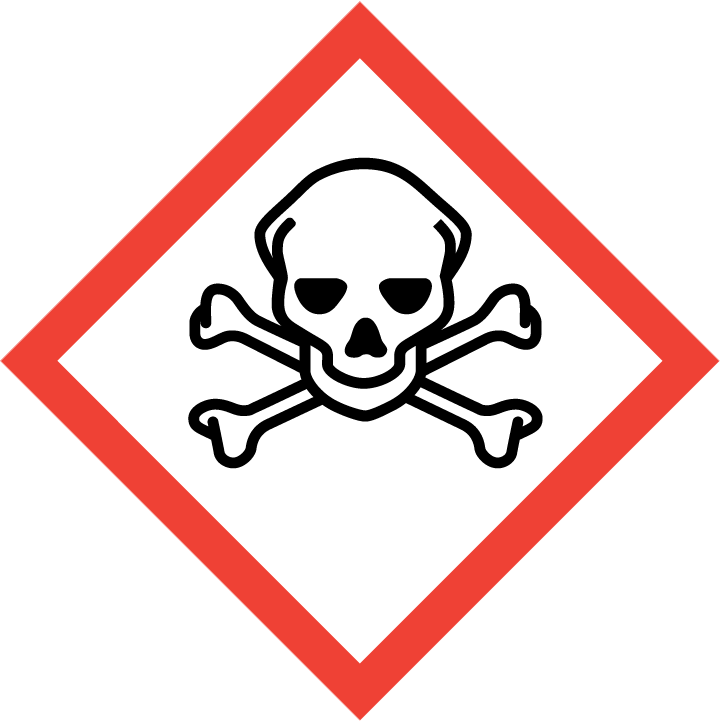
H301 – Toxique en cas d’ingestion.
H311 – Toxique par contact cutané.
H315 – Provoque une irritation cutanée.
H319 – Provoque une sévère irritation des yeux.
P260 – Ne pas respirer les poussières/fumées/gaz/brouillards/vapeurs/aérosols.
P280 – Porter des gants de protection/des vêtements de protection/un équipement de protection des yeux/du visage.
P301+310 – EN CAS D’INGESTION: appeler immédiatement un CENTRE ANTIPOISON ou un médecin.
P302+352 – EN CAS DE CONTACT AVEC LA PEAU: laver abondamment à l’eau et au savon.
P304+340 – EN CAS D’INHALATION: transporter la victime à l’extérieur et la maintenir au repos dans une position où elle peut confortablement respirer.
P305+351+338 – EN CAS DE CONTACT AVEC LES YEUX: rincer avec précaution à l’eau pendant plusieurs minutes. Enlever les lentilles de contact si la victime en porte et si elles peuvent être facilement enlevées. Continuer à rincer.
Catégorisation des produits
Description
Phenyl isocyanide est un composé chimique utile avec une variété d'utilisations de recherche. Nous sommes heureux d'offrir des Phenyl isocyanide de haute qualité dans différentes tailles (pour la recherche, l’échelle pilote ou les applications de production) du milligramme aux lots de plusieurs kilogrammes, ce qui vous permet de sélectionner facilement la bonne quantité pour vos besoins.
Afficher la description complèteGeneral description and preparation:
Phenyl isocyanide (PI) or isocyanobenzene [931-54-4] is a colourless liquid with a pungent odour and the boiling point of 61-62 °C/21 mmHg).[1] It is a highly toxic chemical (inhalation/rat LC50 22 mg/m3/4H, oral/mouse LD50 196 mg/kg), asphyxiant and lachrymator.[2] It is moisture sensitive and corrosive. Isonitriles in general were discovered in 1867 by Gautier in the reaction between an alkyl iodide and silver cyanide[3] and Hofmann in the reaction between a primary amine, chloroform, and alcoholic potassium hydroxide.[4] Traditionally, phenyl isocyanide is commercially prepared by dehydration of N-monosubstituted formamides using phosphorus oxychloride in the presence of tertiary amines.[5],[6] Passerini reaction is one of the oldest isocyanide-based multicomponent reactions and was first described in 1921 by Mario Passerini in Florence.[7] It is a three component conversion of carbonyl compounds, carboxylic acids and isocyanides into α-acyloxy amides. Its synthetic scope has been increased by employing bifunctional substrated, which are able to undergo secondary reactions.[8]Application of Phenyl isocyanide:
The popularity of the isocyanides began really in 1959 with the introduction of the four component reaction of isocyanides, later named after its inventor as Ugi reaction.[9] Aducts of this reaction are amines (ammonia, mono– and disubstituted amines, hydroxylamine, hydrazine and its suitable derivatives), carbonyl compounds, acid components and related compounds (water, thiosulfates, hydrogen selenide, hydrazoic acid, hydrogen cyanate and thiocyanate, aminocyanic acid, carboxylic acids and thioacids, alkoxycarboxylic acids) and isocyanides.[10] Since then many syntheses of unusual molecules were introduces by new types of isocyanide multicompotent reactions.[11] Recently, phenyl isocyanide was used in a one-pot, six-component, tandem cyclocondensation/Ugi/click reaction sequence, which led to highly complex biologically significant quinoxaline-pseudopeptide-triazole pharmacophores.[12]Product categorization (Chemical groups):
Main category: Second level: Third level: _______________________________________________________________________Produits similaires
| Nom du produit | Structure | Numéro CAS | G-code | |
|---|---|---|---|---|
| Benzyl isocyanide | 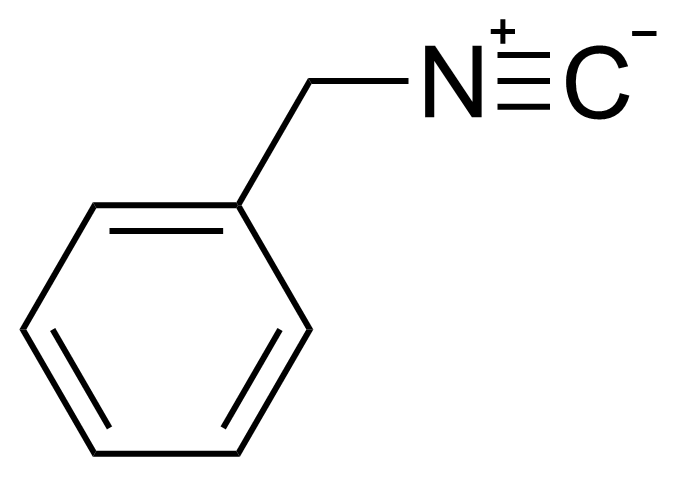 | [10340-91-7] | GEO-02805 | |
| 4-Chlorophenyl isocyanide | 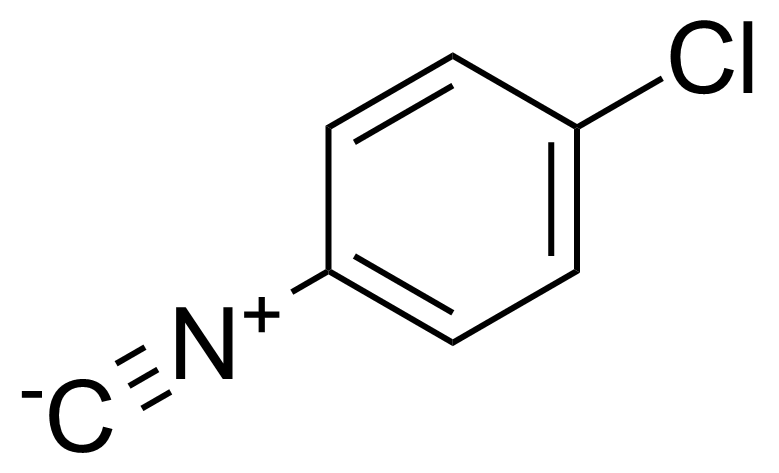 | [1885-81-0] | GEO-03705 | |
| 3-Chlorophenyl isocyanide | 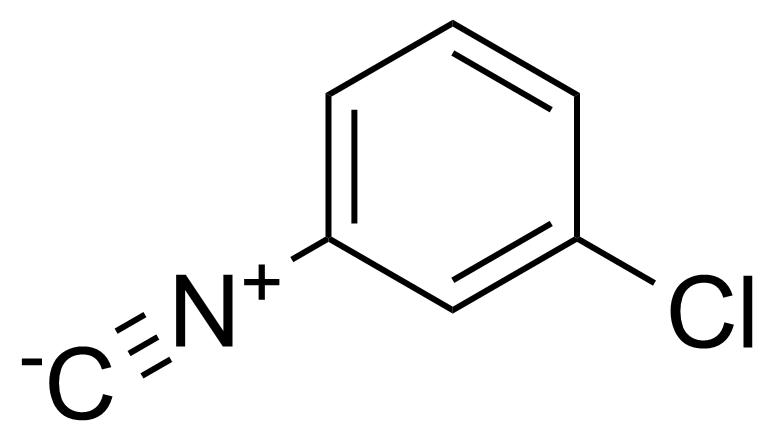 | [32686-54-7] | GEO-03704 | |
| Cyclohexyl isocyanide | 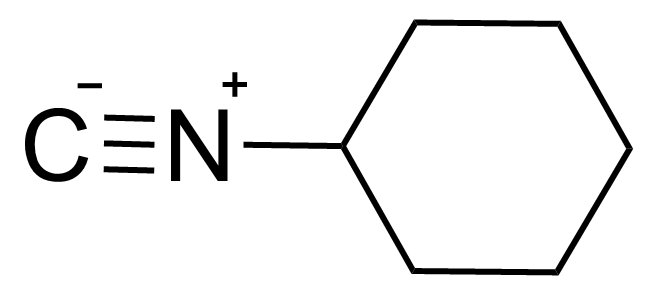 | [931-53-3] | GEO-00871 | |
| Cyclopentylisocyanide | 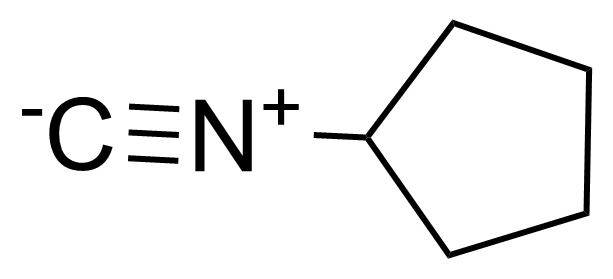 | [68498-54-4] | GEO-02903 | |
| 3,5-Difluoro-1-(isocyanomethyl)benzene | 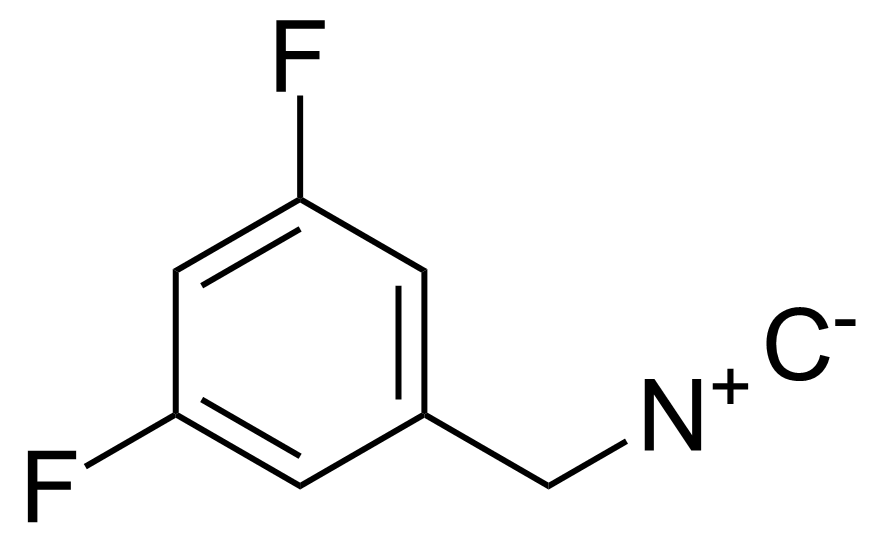 | N/A | GEO-03696 | |
| 2,4-Difluoro-1-(isocyanomethyl)benzene | 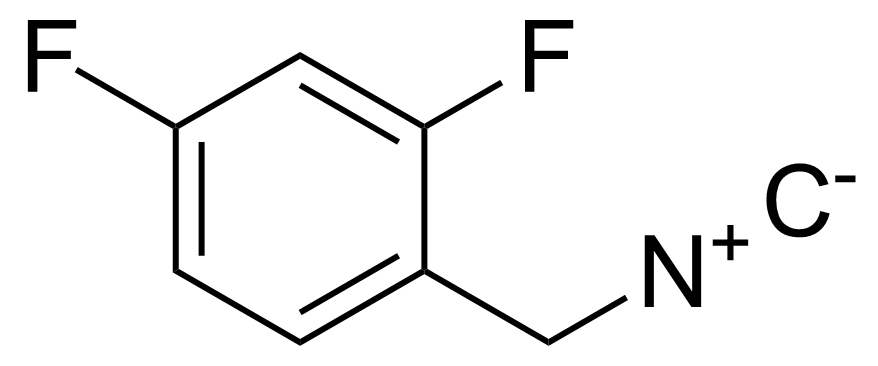 | [730964-55-3] | GEO-03698 | |
| (S)-(-)-alpha-Methylbenzyl isocyanide | 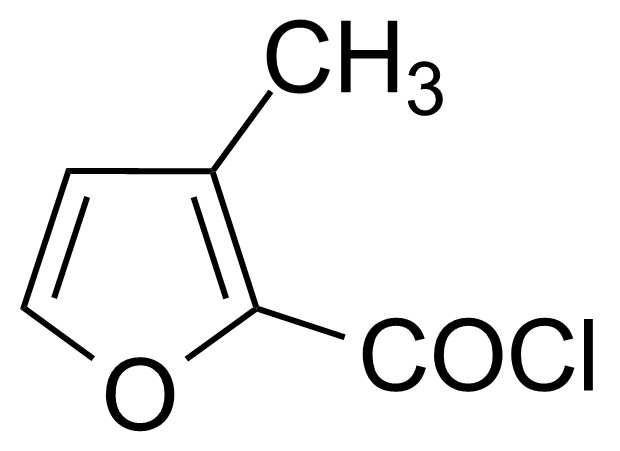 | [21872-32-2] | GEO-03775 | |
| a-Methylbenzyl isocyanide |  | [17329-20-3] | GEO-01780 | |
| Methyl 2-isocyanoacetate | 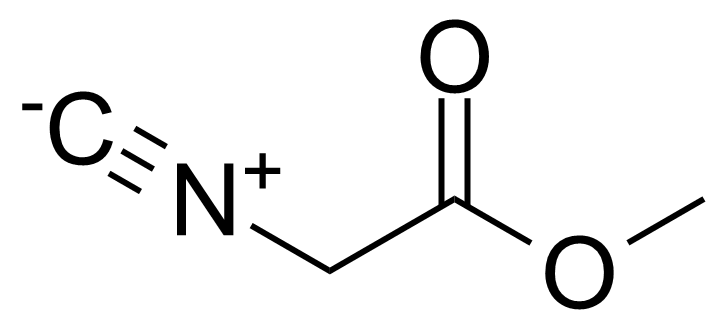 | [39687-95-1] | GEO-03019 |